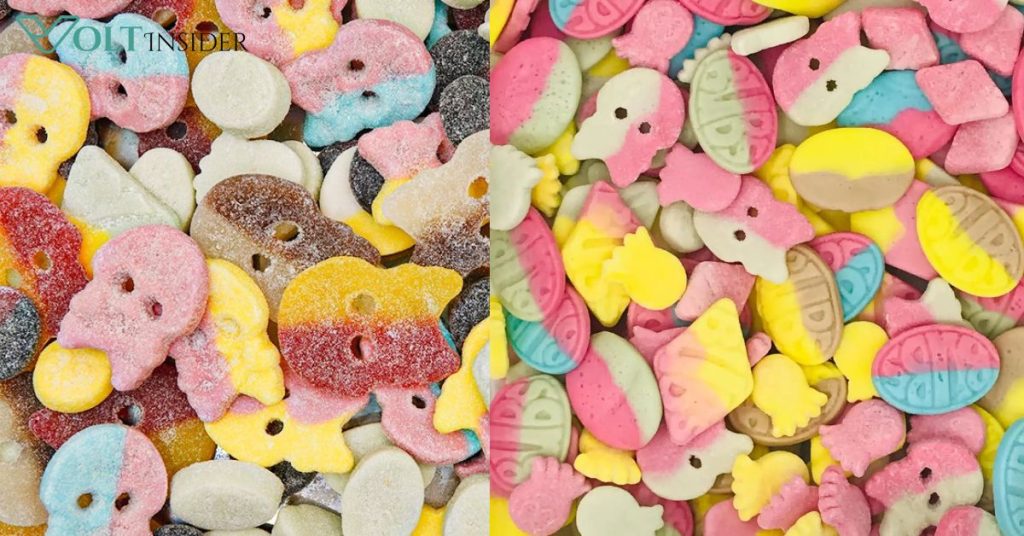Introduction: Discovering Swedish Candy – A Taste of Tradition and Innovation
Sweden’s vibrant confectionery world is more than just sweets—it’s a reflection of the country’s cultural heritage, design sensibilities, and mindful consumption habits. Renowned for its intriguing flavor combinations—think sweet mingling with salty or sour—the Swedish Candy landscape offers everything from soft marshmallows and licorice to jelly beans reminiscent of nature’s colors. These treats are crafted with quality ingredients, avoiding high-fructose corn syrup and leaning toward real sugar and even vegan, gluten-free options.
A cornerstone of Swedish candy culture is the cherished tradition of lördagsgodis—”Saturday candy.” This weekly ritual, dating back to the 1950s government initiative to limit sugar-induced tooth decay, encouraged families to enjoy sweets just one day a week. What began as a public health measure has evolved into a beloved family event: each Saturday, Swedes of all ages head to grocery stores with towering “pick-n-mix” bins, choosing treasured candies for a shared, joyful indulgence.
This article takes you on a journey through Swedish Candy—exploring its fascinating history, diverse flavors, standout brands, and global appeal. Whether you’re curious about the iconic licorice or marshmallow cars, craving a cultural connection, or simply want to indulge, read on to learn what makes these sweets uniquely Swedish.
History & Tradition of Swedish Candy
The story of Swedish Candy is steeped in centuries‑old traditions, public health efforts, and an enduring spirit of lagom—the Swedish ideal of balance. Though sugary treats once belonged to special occasions, they’ve evolved into culturally cherished habits with a fascinating backstory rooted in both moderation and nostalgia.
From Post‑War Moderation to National Ritual
The tradition of lördagsgodis, meaning “Saturday candy,” began in 1959 following revelations from the Vipeholm dental studies—government-sponsored sugar experiments at a psychiatric hospital that proved frequent candy consumption caused tooth decay. In response, health authorities encouraged families to limit sweets to once a week. What could’ve been a bland public policy instead became a joyful ritual: every Saturday, families would stroll into “pick‑n‑mix” aisles, selecting their sweet favorites . This tradition not only curbed sugar overconsumption but also introduced a special weekly event that children and adults look forward to.
Candy Culture & Iconic Packaging
In the 1960s and 70s, independent candy shops, known as godisbutiker, flourished. These stores offered bins of loosely sold candy—called lösviktsgodis—where customers could scoop and mix their desired selection. Iconic packaging, like the mid‑20th century “Dots bag,” became synonymous with childhood joy. Though later replaced by chain-brand packaging, the nostalgic Dots design has staged a recent comeback, symbolizing the enduring emotional connection Swedes hold with their sweet heritage.
Flavor Innovation & Ingredient Quality
Swedish Candy is celebrated not just for its cultural habits, but also for its commitment to high-quality ingredients. In contrast to many American candies, Swedish sweets use real sugar, avoid high-fructose corn syrup, trans fats, and GMOs, and rely on natural colorings . EU regulations also restrict certain additives, ensuring cleaner formulations. The result? A taste many describe as “just better”—a candy experience where fruity and sour notes come through distinctly, free from artificial aftertastes.
Popular Types & Brands of Swedish Candy
Swedish candy offers a delightful spectrum of flavours and textures—from salty licorice to fluffy marshmallows, reflecting both traditional and modern tastes. Here, we explore four standout categories and iconic brands that define Swedish Candy culture.
Licorice: Salty, Sweet & Bold
Salty licorice (saltlakrits) is a cornerstone of traditional Swedish candy. Varieties like Djungelvrål (salty monkey-shaped pieces), Salt Sill (salty fish), Kaninskitar (“rabbit poop”), and Turkisk Peppar (spicy licorice bonbons) are beloved by aficionados. Licorice lovers relish these intense flavors—some even joke that only true Swedes can handle them. The bold spice and salt create a unique taste adventure that sets Swedish Candy apart globally.
Gummy & Jelly Favorites
Swedish gummies come in playful shapes, covered in sugar crystals or sour coatings. Swedish Fish, though more legendary internationally, originated in Sweden in the 1950s. Pick-n-mix staples like Bils Sura (sour car gummies), Haribo Nappar (pacifier-shaped gummies), and wine gums offer colorful, chewy textures that pop with fruity flavors and vivid presentations.
Marshmallow Classics: Ahlgrens Bilar & Sockerbitar
Ahlgrens Bilar, introduced in 1953, are pastel marshmallow cars and Sweden’s most popular candy . With a soft yet chewy texture and fruity taste, they remain a nostalgic favorite—praised for being “not overly sweet” by Amazon reviewers.
Meanwhile, sockerbitar—square marshmallow-like treats—offer a dryer, fluffy chew that delights fans of light-textured candies
Chocolate & Toffee: Daim & Dumle
Swedish chocolate and toffee are also well-loved:
- Daim bar, introduced in 1952, features crunchy almond caramel coated in milk chocolate.
- Dumle toffees, first from Sweden in 1945 and now produced by Finnish company Fazer, offer soft toffee centers with rich chocolate coatings in flavors like mint, cranberry, and salty liquorice.
Quick Overview Table
| Category | Iconic Treats | Highlight Flavor/Textural Notes |
|---|---|---|
| Licorice | Djungelvrål, Salt Sill, Turkisk Peppar | Intense, salty, amped-up sweetness; classic Swedish taste |
| Gummies/Jellies | Swedish Fish, Haribo Nappar, Bils Sura | Juicy, fruity, often sour or sugar-coated |
| Marshmallow Foam | Ahlgrens Bilar, sockerbitar | Light, soft, chewy—with nostalgic appeal |
| Toffee/Chocolate | Daim, Dumle | Crunchy caramel or toffee coated in chocolate, versatile flavors |
Why These Stand Out
Ahlgrens Bilar alone is a phenomenon—dubbed “Sweden’s most sold car,” these marshmallow cars have sold for over half a century . Swedish Fish, adapted for U.S. markets in 1957, combines fun design with chewy satisfaction—though EU versions differ slightly in ingredient purity.
Meanwhile, chocolate fans enjoy Daim’s smooth exterior and crunchy caramel, while Dumle’s variety of flavors showcases ongoing innovation in Swedish Candy.
Global Popularity & Modern Trends of Swedish Candy
Swedish candy has transcended its nostalgic roots to become a global sugar sensation—fueled by viral trends, mindful ingredient choices, and a growing appetite for unique flavors.
TikTok-Fueled Craze & Pop-Up Surges
In early 2024, TikTok went wild for Swedish candy, particularly brands like Bubs gummies and Ahlgrens Bilar. Videos of creators tasting these sweets amassed millions of views, sparking long lines at shops like BonBon in New York and global sell-outs. One Eater article noted that BonBon’s Manhattan store saw “lines out the door” thanks to the trend.
Supply struggles followed: Swedish manufacturers—already slowed by mandatory summer factory closures—could barely keep pace with demand, forcing batch cuts and rationing. Reddit users observing the shortage remarked:
Retail Expansion in the US & Europe
Major retailers like World Market added viral Swedish candies such as Bubs Dizzy Skulls to their shelves in mid-2025. Specialty stores like BonBon and Sockerbit (LA) are thriving as weekend hotspots, with lines so long they rival bars and restaurants after dark.
Authentic Texture, Clean Ingredients & Ethical Positioning
Consumers praise Swedish candy for using real sugar, avoiding high-fructose corn syrup, and featuring fewer additives. Many offerings—like Bubs—are vegan, gluten-free, and use natural colorings, appealing to growing conscious-consumer trends.
Source: Atlasobscura / En.Wikipedia
Everlasting Classics & Brand Resurrection
Longstanding favourites hold strong: Ahlgrens Bilar, dubbed “the world’s most sold car,” continue topping charts in Sweden—enough that some brands market them internationally. Meanwhile, Polkagris, a protected peppermint stick from Gränna since 1859, reminds us of Sweden’s candymaking heritage.
Conclusion: Savoring Sweden’s Sweet Legacy
From its roots in public health to its place in modern global culture, Swedish candy stands out as much more than a sugary snack—it’s a blend of tradition, quality, and delight. The time-honored practice of lördagsgodis (Saturday candy), born of the 1959 Vipeholm dental experiments, transformed candy consumption into a cultural celebration that balances enjoyment with restraint. This joyful ritual continues to thrive today, driving both local and international interest in Swedish sweets.
Swedish candy wins hearts through its clean ingredients, using real sugar, minimal additives, and sometimes vegan formulas—factors that distinguish it from many American counterparts . Combined with playful designs, bold yet nuanced flavors (from foamy marshmallows to salty licorice), and TikTok-fueled global appeal, these sweets are more than treats—they’re experiences. Whether you’re savoring a marshmallow car or tasting gummy skulls, Swedish candy invites you into a world of nostalgia, novelty, and shared joy.
Frequently Asked Questions (FAQs)
- What is the most iconic Swedish candy?
- The legendary salty licorice (salmiak) holds this title, with varieties like Djungelvrål or Turkisk Peppar offering intense, salty-sweet experiences that define the Swedish palate.
- Why do Swedes love Saturday candy (lördagsgodis)?
- The tradition began in 1959 to combat tooth decay, allowing sweets only once a week. What started as dental advice became an eagerly awaited cultural ritual celebrated in every corner of Sweden.
- Is Swedish candy healthier than other candies?
- Many believe so. Swedish candies often use real sugar, avoid high-fructose corn syrup and artificial additives, and include vegan/gluten-free options, appealing to those seeking cleaner ingredients.
- How can I buy Swedish candy internationally?
- Many retailers and stores offer shipping worldwide. Popular outlets include BonBon (NYC), Sockerbit (LA), World Market, and Scandy & Swedish Candy Land—all noted in international trend reports .






